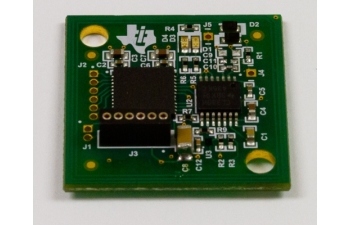SSZTC54 september 2015
Most industrial equipment requires some method for a technician to interface with the equipment in order to capture diagnostic data or send configuration data to the machine. This can vary from things like water and electricity meters to manufacturing equipment. The interface to such a device should be secure, robust and have appropriate data throughput without adding too much additional cost or power.
Near Field Communication (NFC) is a great way to provide such a wireless service interface. NFC is a short range (typically <10cm) wireless communication protocol which operates using 13.56MHz in the magnetic field. The technology is proximity based, so there is no pairing procedure required before communication, easing the user experience. In its most basic form, the user will simply “tap” an NFC reader to the NFC tag to read some data. Use of the magnetic field allows for a very controlled communication range, which provides some inherent security. Encryption can also be utilized to increase the level of security. In addition to the security aspect, NFC is a good solution due to the standardization and adoption of the technology in smartphones and tablets. The first major smartphone including NFC was introduced in 2010. Since then, the adoption has grown quickly and five years later, most smartphones include this technology. The implementation of this technology can offer a very low-power or even no-power source when the device can harvest energy from the RF field.
Below are some of the identified use cases of NFC in service interface applications. Since this is still a fairly new technology and application, I expect to see additional use cases identified in the future.
- Tap-to-diagnose – Error codes, log data, and other diagnostic data can be communicated to an NFC-enabled smartphone or other NFC-enabled handheld device. In the case of a smartphone, this data can also be sent to the cloud for further analysis and storage. Use our reference design to get started with your data logging and diagnostic reporting application.
- Tap-to-configure – NFC-enabled smartphones can provide very fast configuration changes as needed. This is especially useful for equipment that does not have a display or keyboard since the smartphone touchscreen can be used for both.
- Tap-to-access – There are many cases in which different technicians should have differing access privileges and an easy way to control this is by using an NFC badge. Again, this is useful when there is no such input method like a keypad where a user may type in a password. The contactless nature of NFC also provides a great benefit in a dirty and dusty environment, where contact or line-of-sight-based technologies will wear out over time or require cleaning to continue operating properly. To begin developing tap-to-access applications, check out our reader module reference design.
- Tap-to-update – In peer-to-peer mode, NFC can attain data throughput up to 35kBps. In some situations, this is adequate for sending a firmware update. In systems which have a large firmware file, NFC can be used as a connection handover to another higher throughput technology such as Wi-Fi®. This simplifies any connection to the network. Our NFC active and passive peer to peer communication reference design can help you develop tap-to-update service interface applications.

In regards to device selection, the different use cases and requirements could warrant different classes of devices. A dynamic tag, such as RF430CL33xH, could be useful in diagnostics and configuration where access control and firmware updates would lean towards a full transceiver solution for additional operation modes and increased throughput, such as TRF79xxA.
I hope this provided some useful insight into the new use cases for NFC. Until next time, this is Eddie “tapping” out.